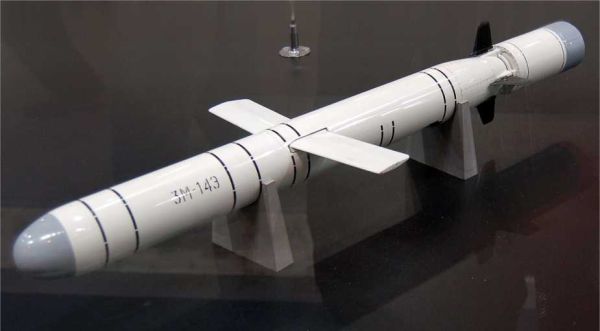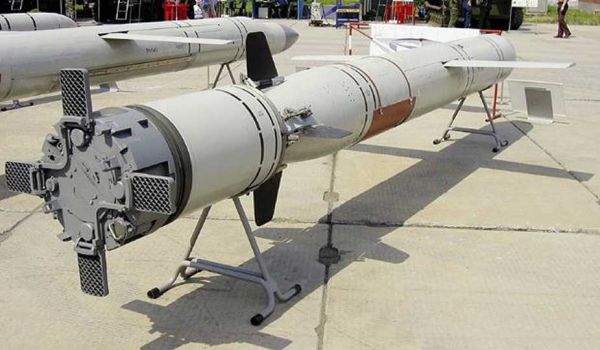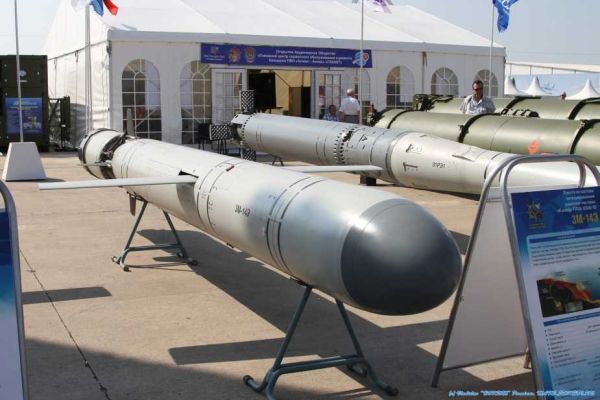Missiles.
3M14 Biryuza SS-N-30A Kalibr Sagaris.

The 3M14 Biryuza is a Russian sea-launched naval attack cruise missile (LACM) developed by NPO Novator, a leading defense enterprise in Russia. Known by its NATO designation Sagaris SS-N-30A, this missile is a key component of the Kalibr missile family, designed to deliver precision strikes against ground-based strategic targets. Introduced into service in 2015, the 3M14 has an operational range of 1,500 to 2,500 kilometers in domestic variants and is deployed across multiple launch platforms, including submarines and surface ships.
Country users: Russia, India, China, Algeria, Vietnam, Iran
Description
The 3M14 Biryuza, NATO designation Sagaris SS-N-30A, a naval attack cruise missile developed by NPO Novator of Russia, represents a significant advancement in precision-strike capability within the Kalibr missile family. It builds on the legacy of the Soviet-era 3M10 Granat and is closely related to the export-focused 3M-14E "Club" missile. Compact and versatile, the 3M14 can be launched from NATO-standard 533 mm torpedo tubes, vertical launch systems, and containerized platforms, making it adaptable to various naval and coastal defense operations.
The 3M14’s design emphasizes low-altitude flight, high maneuverability, and advanced guidance to evade detection and engagement by sophisticated air defense systems. Its primary targets include command centers, supply depots, airfields, industrial infrastructure, and other strategic land-based assets. Export versions, such as the 3M-14E, feature a reduced range of 300 kilometers due to the restrictions imposed by the Missile Technology Control Regime (MTCR). These variants have been integrated into systems like Club-S for submarines, Club-N for surface ships, and the containerized Club-K system.
The missile first gained prominence during the Syrian Civil War in 2015, where it was used to deliver precision strikes from naval platforms over 1,500 kilometers away. It is now widely deployed across the Russian Navy’s submarines, frigates, and corvettes, reflecting its strategic importance in long-range precision warfare.
Exported versions have been supplied to nations such as India, Algeria, Vietnam, China, and Iran. India, for example, integrated the missile into Sindhughosh-class submarines and Talwar-class frigates under a contract for 28 missiles. The modular nature of the Kalibr system ensures that the 3M14 remains adaptable to evolving naval and strategic requirements.
3M14 Biryuza Kalibr missile variants:
- 3M14: Standard land-attack cruise missile variant used by the Russian Navy with a range of 1,500–2,500 km.
- 3M-14E: Export variant of the 3M14 with a range limited to 300 km to comply with the Missile Technology Control Regime (MTCR).
- 3M-14TE: A version of the 3M-14E equipped with a transport-launch cup for vertical or inclined launch systems.
- Kalibr-PLE: Submarine-launched version of the 3M14, used in the Club-S missile system.
- Kalibr-NKE: Surface-ship-launched version of the 3M14, part of the Club-N missile system.
- Kalibr-M: Mobile or containerized version (Club-M), deployable from land-based systems or platforms like the Club-K container missile system.
- 3M14E Cluster Warhead Variant: A version equipped with submunitions for area and extended targets.
Technical Data
-
Design
The 3M14 Biryuza features a compact and aerodynamic cylindrical design, measuring 6.2 meters in length and compatible with vertical launch systems, inclined deck launchers, and 533 mm torpedo tubes. Constructed with lightweight materials such as aluminum alloys and composites, the missile is optimized for range and stealth. Variants such as the 3M-14E include a solid-fuel launch booster with lattice stabilizers in the tail section for stable deployment from underwater or surface platforms.
-
Warhead
The 3M14 Biryuza missile is armed with a 450-kilogram warhead capable of delivering devastating damage to strategic targets. Depending on mission requirements, the warhead is typically high-explosive and configured for airburst or ground detonation. A cluster warhead variant is also available, equipped with fragmentation, high-explosive, or cumulative submunitions to engage area or extended targets.
-
Propulsion
The 3M14 is powered by a dual-stage propulsion system. A solid-fuel booster initiates the missile's launch, while a TRDD-50B dual-circuit turbojet engine sustains flight. The missile cruises at subsonic speeds of 0.8–0.9 Mach and has an operational range of 1,500 to 2,500 kilometers in domestic variants. Export models, such as the 3M-14E, are limited to 300 kilometers due to MTCR restrictions. This range and speed enable the missile to strike distant targets while evading interception.
-
Guidance Systems
The 3M14 Biryuza missile employs a highly advanced combined guidance system for autonomous precision targeting. Its onboard control system is built around the AB-40E autonomous inertial navigation system, developed by the State Research Institute of Instrument Making. For enhanced accuracy, the missile includes a receiver for satellite navigation systems (GLONASS or GPS) and an RVE-B radio altimeter developed by UPKB Detal.
The radio altimeter allows terrain-following flight by maintaining precise altitude: no more than 20 meters above sea level and 50 to 150 meters above land, dropping to 20 meters near the target. The missile follows a pre-programmed route based on reconnaissance data, with the ability to bypass heavily defended areas by adjusting its path at up to 15 waypoints. In its terminal phase, the missile uses an ARGS-14E active radar homing head for precise target acquisition, even against low-visibility and small-sized targets. This head features a ±45° azimuth viewing angle and a range of up to 20 kilometers.
-
Combat Use
The 3M14 Biryuza is launched from a wide variety of platforms, including submarines, surface ships, and containerized systems. It can be deployed via vertical launch systems or 533 mm torpedo tubes, ensuring flexibility across multiple operational environments. Designed to strike critical infrastructure and other high-value targets, the missile has proven effective in modern conflicts, such as in Syria and Ukraine.
Specifications
-
Type
Naval Land-Attack Cruise Missile (LACM)
-
Country users
Algeria, China, India, Iran, Russia, Vietnam
-
Designer Country
France
-
Types of warhead
High-explosive, cluster warhead (with fragmentation, high-explosive, or cumulative submunitions), nuclear-capable (domestic variant)
-
Accuracy
Estimated Circular Error Probable (CEP) of 3–5 meters
-
Range Missile
1,500–2,500 km (domestic), 300 km (export variant 3M-14E)
-
Weight Missile
Approximately 1,770 kg
-
Speed Missile
Subsonic (0.8–0.9 Mach)
-
Guidance Systems
AB-40E autonomous inertial navigation system, GLONASS/GPS satellite navigation, RVE-B radio altimeter, ARGS-14E active radar homing (terminal phase), terrain contour matching (TERCOM)
-
Dimensions
Length: 6.2 m; Diameter: 0.53 m; Wingspan: 3.3 m









































